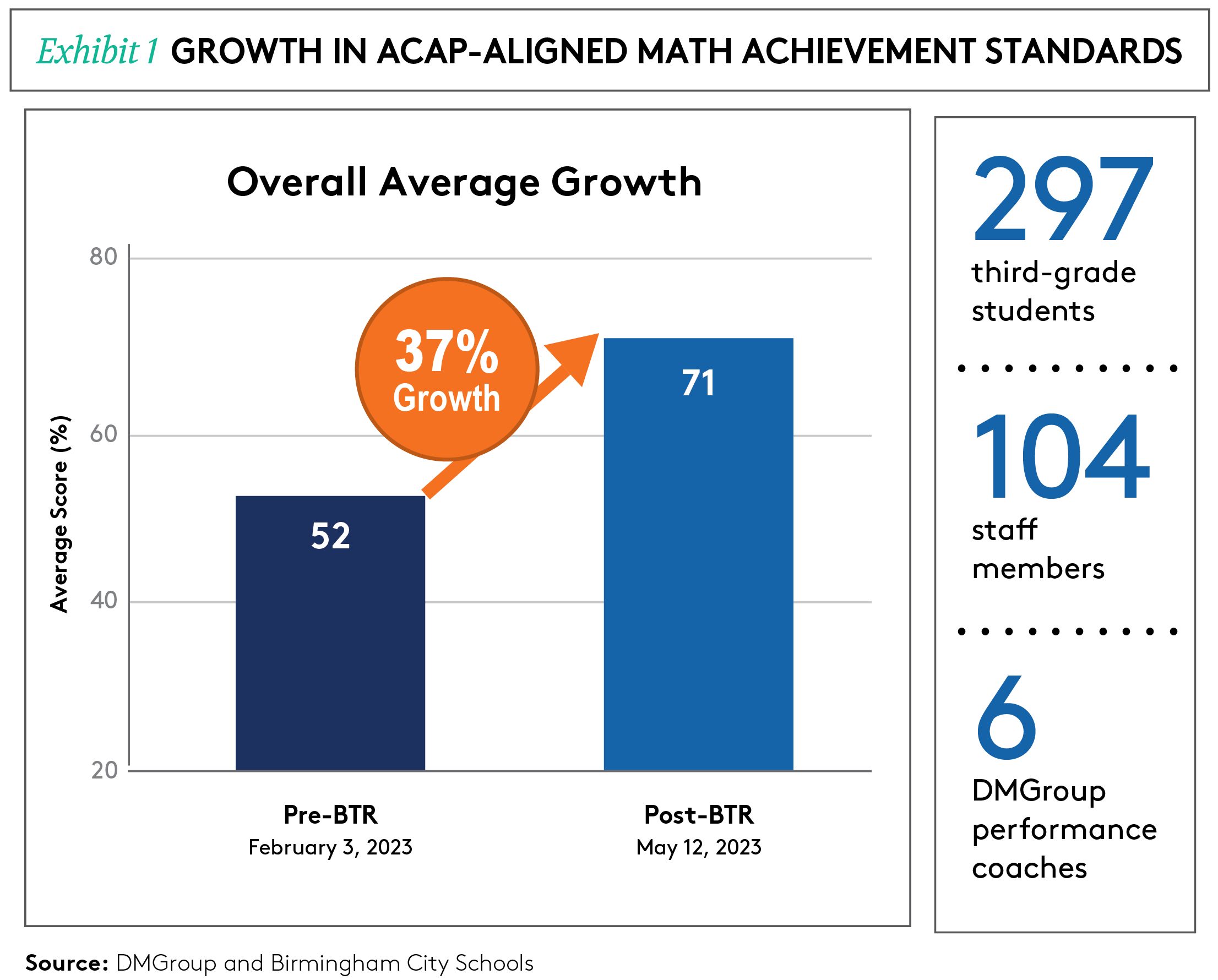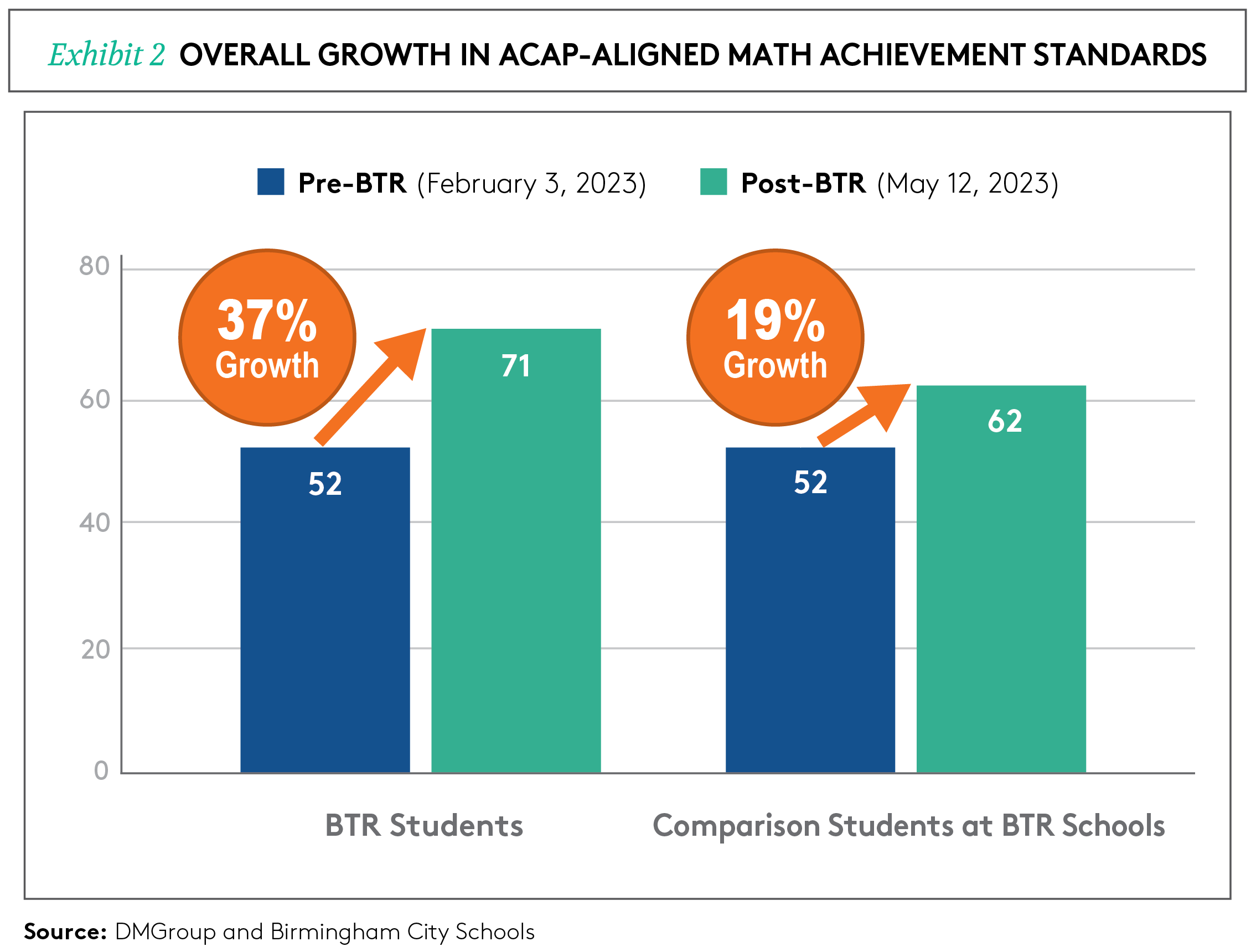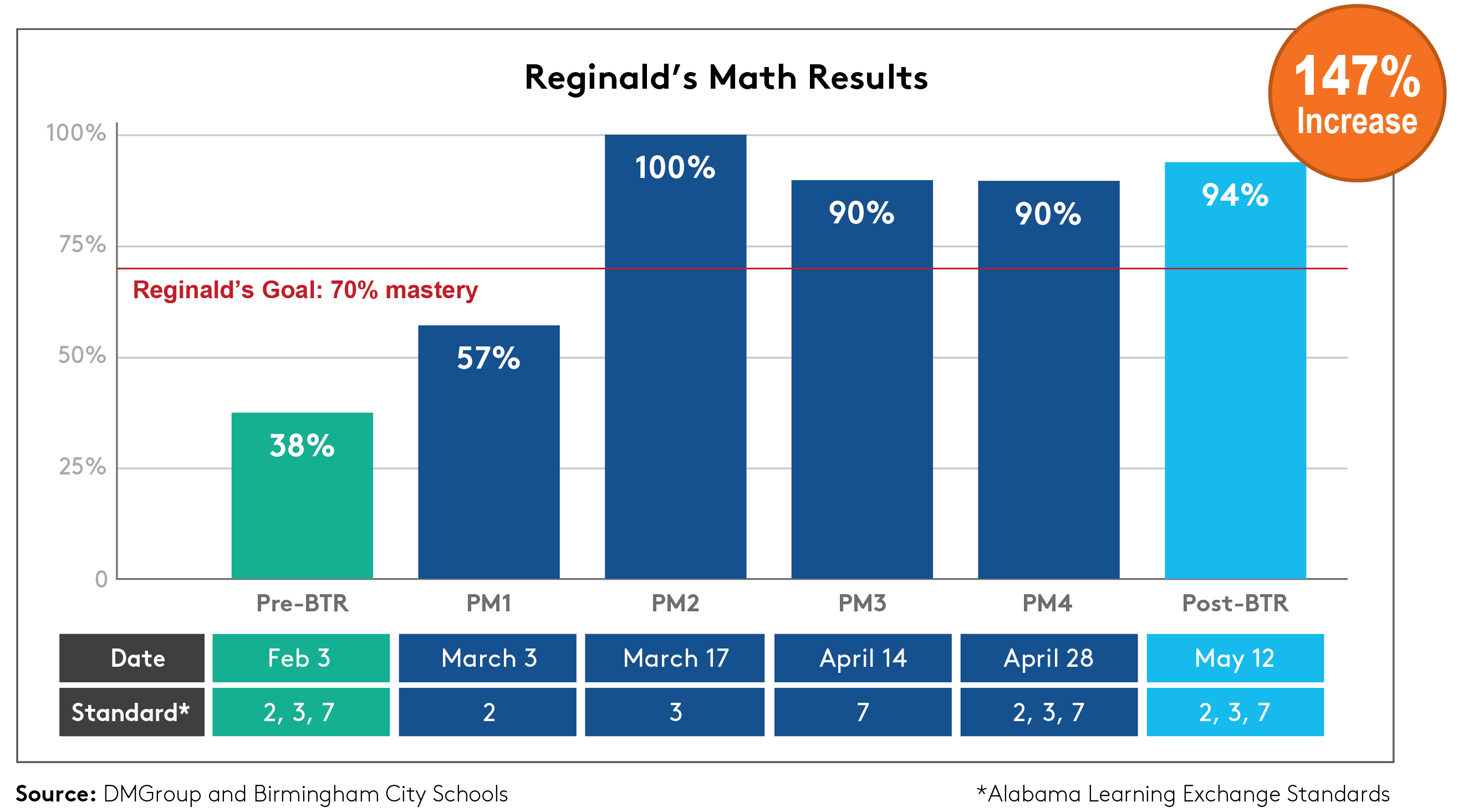In November 2022, the state of Alabama released a list of “failing schools” which included 13 schools from Birmingham City Schools.* Seeking to reduce the number of their schools with failing status, district officials in Birmingham City Schools noted that some of their schools had suffered a significant decline in student performance on the Alabama Comprehensive Assessment Program (ACAP), particularly in third-grade numeracy. The percentage of third-grade students in the 2021-2022 cohort with proficient scores on the math portion of the ACAP was 60% lower than that of the 2018-2019 cohort.** The SY2021-22 third-grade students had been in first grade at the start of Covid-19, and may have been adversely affected by predominantly remote instruction during that critical year. With this in mind, the district resolved to launch an initiative to improve third-grade achievement on key mathematical standards associated with the ACAP. As a part of this initiative, in the spring of 2023, the district partnered with District Management Group (DMGroup) to implement a 10-week rapid-cycle intervention program called Breakthrough Results across 20 elementary schools to focus on third-grade math for those students experiencing the greatest challenges.
Within just 10 weeks of this Breakthrough Results (BTR) intervention, the results achieved were outstanding: students increased their scores by 19 percentage points on average on ACAP-aligned math achievement standards, reflecting a 37% improvement (Exhibit 1).

*Alabama State Department of Education, “Lowest 6% of Schools Identified for the Alabama Accountability Act of 2015,” November 2022, List of Failing Schools—2022, https://www.alabamaachieves.or....
**Alabama State Department of Education, “School Performance,” 2023, State Performance Indicators, https://www.alabamaachieves.or....
Identifying the Teams, the Students, and the Goals
Each of the 20 schools participating in the Breakthrough Results program formed a school team of four to six staff members that included teachers, instructional coaches, and administrators. Each of the teams worked with a dedicated DMGroup performance coach who met with the team weekly.
The work began with each team crafting a Specific, Measurable, Aggressive but Achievable, Realistic, and Time-bound (SMART) goal that would guide their work throughout the program. For this work, the teams selected students to participate in the program based on a holistic view of student needs; their performance on the baseline assessment played a key role in their eligibility to be chosen, but teachers thought critically about which of their students were most in need of an intervention. Having a highly specific goal and identifying a target group of students provided focus for the team’s work.
Data-Driven Strategies Lead to Real-Time Results
With the support of their DMGroup performance coach, each team met once a week to discuss their progress and identify areas where students needed additional support. Additionally, on a biweekly basis, teachers administered progress-monitoring (PM) assessments, which measured students’ performance on one or more key math standards. The students’ scores were tracked in a data dashboard managed by DMGroup. The DMGroup performance coach helped the team members build their capacity to analyze and use this data, and worked with the team to determine root-cause barriers for individual students, develop and implement strategies to address those barriers in real time, and continuously improve. This ensured that no student or critical math standard was overlooked.
One example of a strategy that emerged from the data discussions was leveraging an item analysis to locate gaps in students’ knowledge. An item analysis involves extracting the key concepts being tested in each assessment question or sub-question, and analyzing a student’s response to identify the specific concept or concepts for which the student needed support. Through this analysis, team members discovered that many of the students were struggling with key literacy skills that affected their comprehension of word problems, which ultimately led to lower performance in math. To address this issue, the team members allotted time in their instruction to focus on key words and phrases used in common math problems so that their students were able to solidify these skills.
Throughout the 10 weeks, BTR teams worked to develop, adjust, and home in on the strategies most effective for improving students’ mathematics proficiency. Some key strategies highlighted by teams included the following:
1. Student data talks: Team members organized “data talks” with individual students or small groups to set goals in collaboration with the students, show them tangibly where they were in their progress, and guide them toward their goal. Through this process, students became invested in their own learning journey.
2. Targeted intervention: If a student was identified as falling behind based on their progress-monitoring results, the team members jumped into action to identify the root cause and implement targeted intervention(s) for each student. For example, if a student was able to read the word problem and knew that they were supposed to perform multiplication but got the answer wrong, the teacher worked with that student on “fact families” to address their knowledge gap while keeping them engaged.
3. Curriculum spiraling: The BTR program disrupted the tendency to teach for coverage rather than mastery. Teachers had the time to deeply analyze assessments and identify common student misconceptions in a given standard, which allowed them to pinpoint content areas within the curriculum that needed to be retaught.
During these weekly meetings working together and meeting with their BTR performance coach, team members built their capacity for data analysis, problem solving, and leadership. They also bonded as school teams—working in collaboration to support their students and, most importantly and gratifyingly, seeing their students get results.
Remarkable Results for Students and Staff
The laser-like focus, use of data, root-cause analyses, and continuous improvement approach of the teams produced out-standing results: students who participated in the program improved by 37% on the three key mathematics standards after just 10 weeks. In comparison, similarly performing students in the same schools improved by 19% over the same period of time (Exhibit 2).

Staff also benefited from participation in the BTR program. In a survey conducted at the end of the program, 92% of team members agreed or strongly agreed that they had developed leadership, data analysis, and root-cause problem-solving skills as a result of BTR. The program provided an opportunity to develop each staff member’s unique set of skills, while simultaneously encouraging collaboration between academic and administrative staff. Perhaps most important to staff was the great satisfaction they derived from knowing they were enabling students to achieve such remarkable results.

Reginald† started out with a baseline score of 38% on three key Alabama Learning Exchange mathematical standards, which was 32 points below the goal mastery score of 70% set by the BTR team. After interventions initiated by Reginald’s teachers and mentors, as well as regular progress-monitoring assessments on each of these mathematical standards, Reginald exceeded the 70% target and achieved a score of 94% on the post-assessment, reflecting a 56-point growth!



